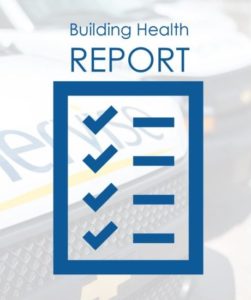Resilient buildings have always been important to facility managers and owners, but 2020 has made it a priority for all those engaged in building safety and sustainability. Facility managers in Midwestern states such as Ohio, Kentucky, and Indiana have always had to prepare for dramatic seasonal changes. The shift from 95 degree hot and humid summers to snowy cold winters is nothing new. Increasingly, owners of commercial buildings are expected to be prepared for more unpredictable weather patterns as the climate changes globally.
In their October 2020 issue, Facility Executive Magazine shared, “There is no better time for facility managers and owners to develop and implement a resilience strategy. Assess risks and access resources to fortify your facilities to withstand threats and hazards.”
Every resilience strategy should take HVAC infrastructure into serious consideration. Rome was not built in a day, and neither is a resilient HVAC and building controls system.
Efficiency, reliability, ease of maintenance, and lowest total life cycle cost should all be considered when establishing a cohesive HVAC resilience plan. These 4 components can be achieved by conducting a risk assessment, preparing for natural and man-made threats, and looking out for available funding and resources.
Local cities and their surrounding counties such as Cincinnati, Columbus, Dayton, and Lexington have done some of the work to identify potential threats likely to occur in local communities. You can find local hazard mitigation plans, continuity of operations plans, and similar guidelines by contacting your local government. These plans are an important tool for facilities managers as they develop or refine building risk assessments.
Another helpful resource is the International Codes (I-Codes), developed by the International Code Council (ICC). Facility Executive Magazine reports, “I-Codes are the most widely used and highly regarded set of building safety codes in the world and are currently adopted and used in the 50 U.S. states, U.S. territories, and in many other countries. Encompassing all aspects of building safety, the I-Codes include codes on plumbing (IPC), fire and gas safety (IFGC), mechanical (IMC), and more.”
It may come as a surprise to some Midwesterners that wildfires in the west can carry particles over hundreds of miles and impact the quality of air in other parts of the country. Which is why facilities experts agree that “to ensure resiliency, it is important to ensure a building’s heating, ventilation, and air conditioning (HVAC) system is not only fully functioning but cleaned and the filters replaced on a regular basis.”
The I-Codes help to provide criteria for HVAC systems to protect from potential natural disasters, building fires, a drop in air quality, and help prevent the spread of viruses like COVID-19. On that note, the ICC has also created a Coronavirus task force. Helpful information from the task force include: new ventilation strategies, how to update general building designs to address whether partitions create potential fire hazards, and how to set up screening areas in lobbies.
The goal of any facility manager or building owner is ensuring their structure and systems are built to last and safe for their occupants. Now more than ever, resilient buildings will be a key to their success for years to come.
Our experienced leadership team at Enervise is equipped to help with all your facilities management challenges, including the development or revision of your building resilience strategy.




